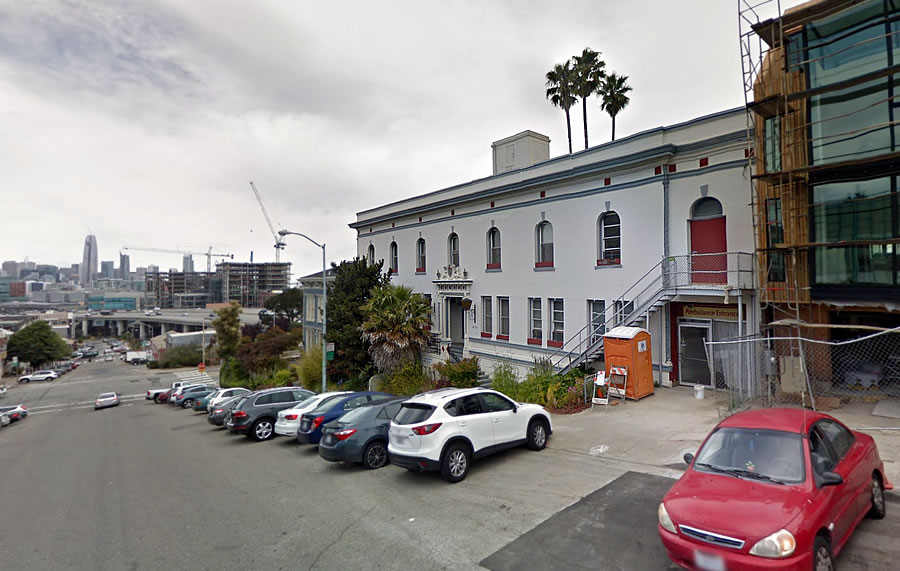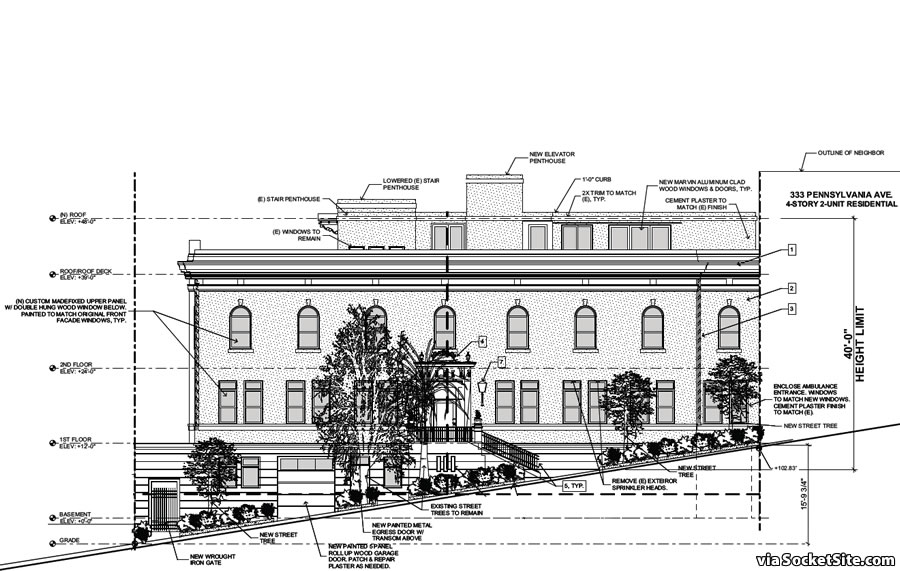With the owner having retired and the former convalescent home having been shuttered, plans to convert the historic three-story building at 331 Pennsylvania Avenue, which was designed by Frederick H. Meyer, constructed by the Bethlehem Steel Company in 1916, and first served as the Union Iron Works Hospital, into residential units first emerged four years ago.
As envisioned, the majority of the existing building is to be retained, its interior remodeled and a two-story addition would be added at its rear.
And assuming the proposed conversion (along with a rear-yard variance to accommodate the aforementioned addition) is approved next month and permits are issued, the project could now yield seven condos (one one-bedroom, five twos and one three) with a new five-car garage and rooftop decks for residents.


I suspect there is a typo above. Is it five five-bedrooms, or five two-bedrooms? I’m betting they’re twos.
[Editor’s Note: Correctly wagered (and since corrected above).]
With larger residential housing projects stalled and being shopped due to exorbitant construction costs will we see more developments similar in scale (under 10 units, no affordable housing triggered) being built across the city?
Historic preservation and low zoning strike again. Three blocks and across the freeway from Dropbox’s massive office where about 4,000 employees will work, and we get … seven homes. And zero BMRs.
Squandering land on these tiny boutique projects, we continue not to take housing seriously. The least San Francisco could do is allow a new residential building as tall as the office complex down the street — 10 stories.
This building, by Fredrick H. Meyer is architecturally significant. Great that it’s being repurposed.
Well he’s right of course: Dropbox’s massive HQ, architecturally undistinguished and far from transit, never should have been allowed. But it’s too late to revisit SF’s selfish decision to lard MB with offices, rather than the housing that’s so desperately needed.
A 10 min walk to the 22nd St Caltrain stop, a block from the T and a few blocks from at least one soon to be Ferry Terminal at the Warriors Arena—not to mention the array of bus lines. Very much not “far from transit”.
Architecturally undistinguishable (if there’s such a thing) could be used to describe almost all of SF’s last 80 years of development; so why build anything at all? In terms of housing vs commercial, I think it’s probably more productive to debate zoning rather than balk at architecture or aesthetics.
Yes I’m sure the Ferry Terminal will be flooded with commuters every day, and of course EVERYthing in SF is near an “array of bus lines” – save maybe the Farallones – so …whatever. As for mediocre aesthetics: if you’re ready to give up one the present – and I’m not quite there but nearing it – then I’d suggest holding on to a bit of the past…which was the result here.
But, yes, the gist of my criticism was the ratio of housing/workers, and my suggestion that rather than tear down everything to make the numerator larger, thought ought to given to making the denominator smaller.
Even the SF Bay ferries are crowded these days…
Muni 22 (currently 55) stops at the front door. How is it far from transit?
If ever a project demanded facadism, this is it. They could easily have preserved the architecturally significant facade and added 3-5 floors of additional housing. Surely they are going to pretty much gut it anyway.
The project as proposed would rise to an effective height of 40 feet, the existing height limit for the parcel.
Nice repurpose of a historic building. Highest and best use, given height restrictions. And a moneymaker for the owner. It’s very hard to do development deals in the city now, so this is one of a few, chiefly because: probably bldg is owned outright, added height, residential, exit as condos, no bmr, no meda, no telegraph hill [dwellers], etc. (yet). Congrats to the owner, nice project on their hands.